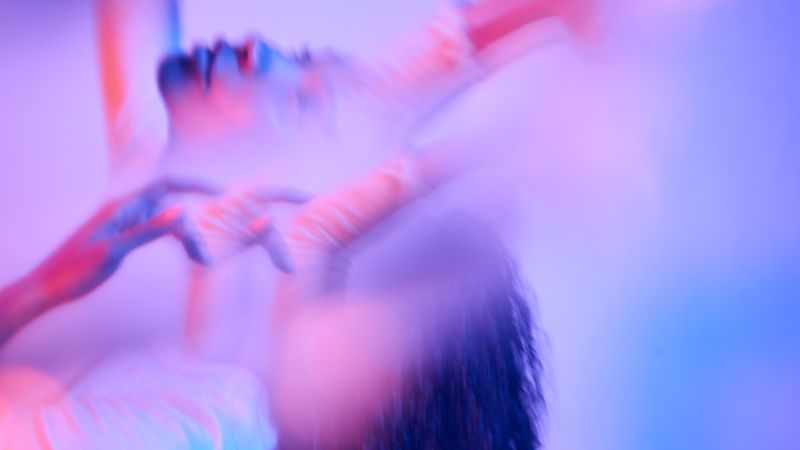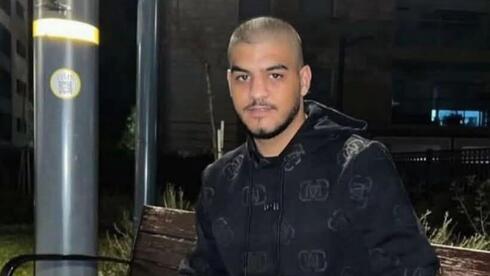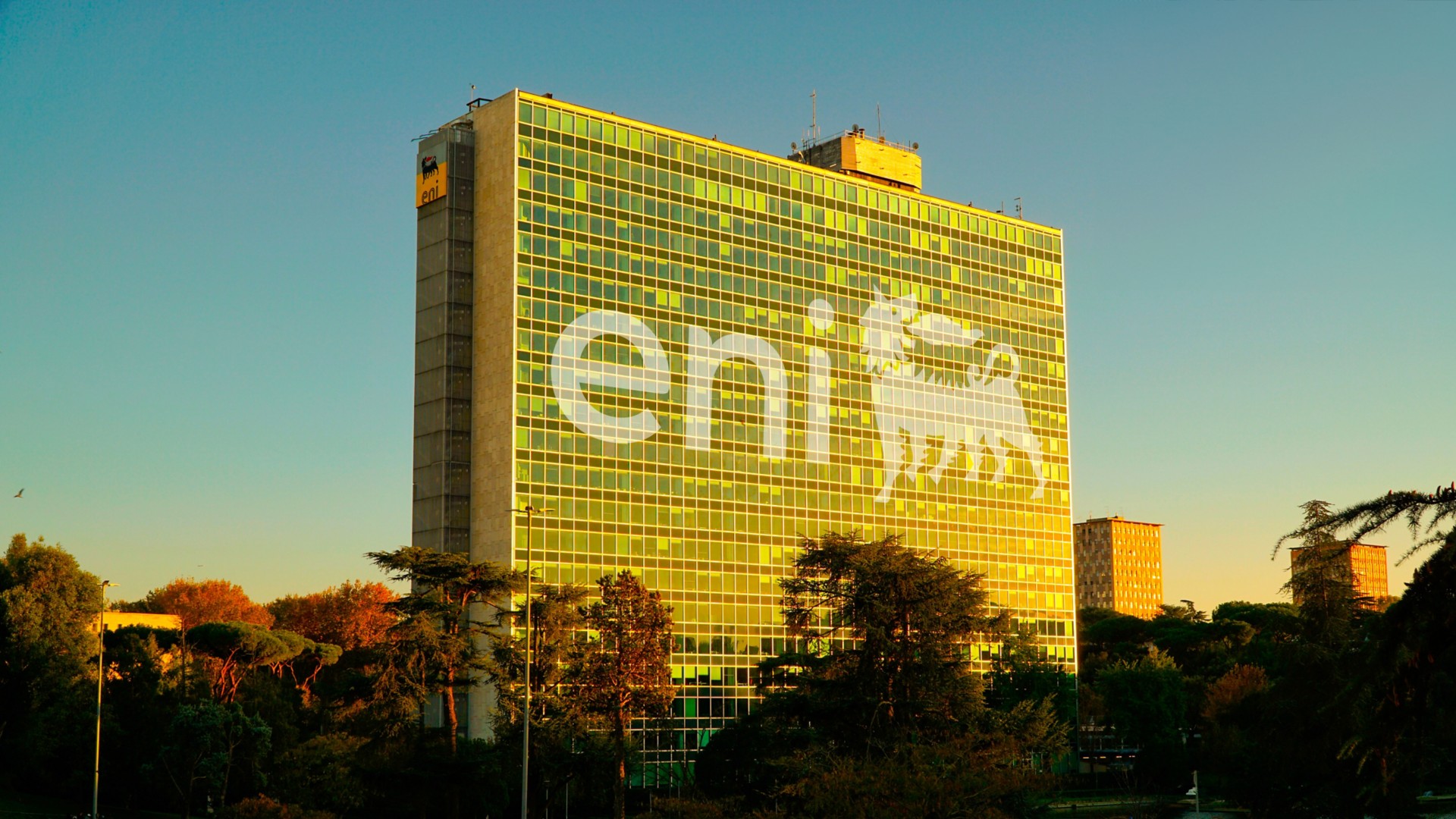
EDITOR’S NOTE: Help is available if you or someone you know is struggling with suicidal thoughts or mental health matters.
In the US: Call or text 988, the Suicide & Crisis Lifeline.
Globally: Befrienders Worldwide has contact information for crisis centers around the world.
One beautiful spring day in New York last year, I found myself in a 10th floor medical clinic, hooked up to a saline IV drip. I was there for my very first ketamine IV infusion, a treatment meant to help me with anxiety, depression and PTSD.
A kind nurse sat by my side and explained that I could use a button to call her if I was uncomfortable in any way or wanted help. And did I want a blanket? Yes, I did want a blanket. I wanted to feel warm and cozy, and I had brought everything else I needed: an eye mask, a journal to reflect on the ketamine therapy experience, my headphones for music and a suitably jolly playlist on my phone.
“Do you want the blinds open or closed?” the nurse asked. I thought for a second. “I guess closed?” She shut the blinds and continued her work, leaving the room to get the blanket and ketamine vial. Appearing a few minutes later, she carefully laid the blanket over me, tucked me in reassuringly and positioned the recliner so I was comfortably somewhere between seated and lying down. She took the vial, measured out the dose and injected it into the IV bag.
Once she inserted the ketamine into the IV drip, it took longer than I thought to take effect. For around 20 minutes I lay in the darkness, feeling no different. “Nothing is happening,” I thought, though I was relaxed, enjoying the peace of being alone. “Maybe she didn’t really give me anything. Maybe all of this is a weird con.”
Then, I felt my tongue start to go numb. I giggled quietly to myself. “Oh. I guess this is it,” I thought.
The hope and promise of ketamine
First synthesized in the 1960s, ketamine was originally developed as an anesthetic for which it is still used. Ketamine is not a psychedelic like psilocybin, MDMA or LSD — these drugs are hallucinogens or psychoactive substances that can “temporarily alter a person’s mood, thoughts, and perceptions,” according to the National Institute on Drug Abuse.
Ketamine is a dissociative anesthetic, which can have some hallucinogenic effects at low doses, according to the Drug Enforcement Administration. The drug induces a state of sedation and calmness, meaning patients feel detached from their environment and pain, and it may produce hallucinations by distorting senses. This makes the dissociative anesthetic feel pretty close to a psychedelic experience, but they are distinctly different classes of drugs.
The Western world is experiencing something of a psychedelic renaissance, with an increasing amount of interest in drugs that decades ago were considered rebellious and dangerous to some groups but fun to others who used it while clubbing and attending raves. And yes, there are people who prescribe and use it irresponsibly, as is the case with many drugs.
But there is a growing body of evidence showing that psychedelics can help people who are struggling with their mental health: MDMA has shown promise as a treatment for post-traumatic stress disorder, or PTSD. A clinical trial showed that synthetic psilocybin — the active compound in magic mushrooms — rapidly eased severe depression in people with treatment-resistant depression. Two years ago, Australia legalized prescriptions of MDMA and psilocybin for PTSD and treatment-resistant depression. Last year, advocates attempted to get MDMA approved for therapeutic use in the United States, a move that was rejected by the US Food and Drug Administration.
As for ketamine, it’s a Schedule III controlled substance in the US (defined as drugs with a low to moderate potential for psychological and physical dependence) but approved as a general anesthetic, as it is in the United Kingdom and across many countries in Europe, including Germany and Poland. Patients have reported that ketamine helps with chronic pain, and studies have shown it to be incredibly effective at reducing symptoms of depression and suicidal ideation. That’s why it’s being used off-label around the world to treat people with a variety of mental health issues.
The research is limited but promising, and pharmaceutical companies have been looking at how to get the benefits of ketamine without the dissociation typically experienced with the drug. A nasal spray version of ketamine, called esketamine — brand name Spravato — was developed by Johnson & Johnson and approved in the US by the FDA for treatment-resistant depression, or TRD, in 2019. Earlier this year it became the first approved stand-alone treatment for TRD.
For all its promise, ketamine also has high risk. The drug rose in prominence in 2023 when “Friends” actor Matthew Perry died of the acute effects of ketamine. It is still bought, sold and used recreationally around the world despite its status as a controlled substance, and the damage can be devastating when used improperly, leading to painful bladder inflammation and damage, as well as kidney and liver damage.
In the United Kingdom, ketamine is reportedly being used regularly by children as young as 12. The British government is in the process of reviewing the classification of ketamine, meaning that it could become a Class A drug along with heroin and cocaine — the highest and most dangerous classification.
Out of options
While I was aware of Perry’s death when I looked into ketamine therapy for myself, I also knew that the actor had struggled with addiction and taken it outside of a clinic. I wasn’t worried that things would go wrong for me, because I knew I’d be in a controlled, medical setting.
I’ve struggled with my mental health since I was a teen, and at age 35 I was diagnosed with a form of PTSD in 2023. In my case, it wasn’t caused by a single formative experience but prolonged exposure to a previous toxic work environment. Though I was years out of the situation, the experience still had a hold on me, like a dark cloud hovering just out of view. It wasn’t something I consciously thought about, but it affected me deeply. My self-confidence and self-worth had been destroyed. At my best, I seemed fine, but certain situations would make me anxious. At my worst, I’d experience full-body flashbacks — taking me back to how I felt when I was experiencing it. Panic. Tight chest. Nausea. Struggling to breathe. Headaches. Persistent brain fog.
For years, I’d lived in an internal world of anxiety and rumination that prevented me from fully living my life, in big ways and small. The muscles in my shoulders and neck were as hard as rocks, and I could never relax. Everything made me nervous, and everything felt overwhelming, all the time.
In the weeks prior to starting the ketamine treatment, I had migraines several times a week. Weekends gave me no respite: I’d get migraines on a Friday or Saturday, spend the whole day trying to recover and be completely wiped out the next day, unable to do anything. By the time I recovered, if at all, it was back to work.
I had already done everything I could think of. I’d tried different antidepressants on and off for years. I had counseling. Sometimes, something would work for a while, then it would stop. Other times, things just didn’t work. Some therapy styles, for instance, made me feel like I was being criticized for my responses to things rather than feeling empowered to make positive changes. Some drugs left me an emotionless zombie with no capacity for joy. I couldn’t stand feeling empty and numb.
The last straw was when my mother confided that she was worried that my dad was seriously ill. For an expat living thousands of miles away from my family, this was one of my biggest fears. I couldn’t be there to see him or gauge whether it really was a concern. I thought about how quickly I might be able to fly home, how much money it would cost, whether my job would support me taking leave. It was an incredibly intense period of my life, feeling under pressure from all angles. I found myself wondering if I would see him again, spiraling rapidly, fretting at every moment that I would get a call confirming the worst. I was in freeze mode, unable to function, lost in impending doom and preemptive grief. It was taking a huge toll on my daily life, and I needed to fix it.
I had heard through a friend that ketamine was being used legally but off-label for treatment-resistant depression in the US and wondered if it could help me, too. I set about researching its applications for PTSD and anxiety, reading everything I could get my hands on. After several weeks, I decided to try it. At best, it might help me. At worst, it was a waste of money but something I could at least say I’d tried. I looked online and found a clinic in New York that would do infusions.
After looking at dozens of positive reviews and recommendations online, I scheduled a consultation with the founder — a doctor with decades of experience using ketamine in medical settings. It is possible to get a prescription for lozenges to use at home, but I wanted to be treated in a medical setting being watched and cared for by professionals.
The 90-minute video call filled me with reassurance. I explained my situation, how I was feeling, how I was utterly incapable of coping with what was going on and how it was starting to affect me at work. The doctor listened sympathetically, and I asked if I would be a good candidate for the treatment.
While he couldn’t guarantee it would help me, he told me I fitted the profile of those who found most benefit: Women in their mid-30s who had experienced anxiety and depression tended to respond well.
“This is crazy,” he told me as we ended the call. “You’re too young to live like this. Let’s get you better.”
Afterward, I burst into tears. It felt like he was the only person who truly understood how I was feeling, even though we had just met.
My brain on ketamine
For six days over two weeks, I would settle in that cozy recliner at the clinic, where the staff were incredible, treating me with care and compassion. A nurse would take my blood pressure, gently put a blanket over me and give me an eye mask when I forgot mine at home. The team would assess how I felt since the last infusion and decide whether to increase my dosage. I’d be set up with the IV, and someone would check in on me every 20 minutes — not that I was aware of it, as I had my music and eye mask on. Afterward, the staff would give me a carton of apple juice. My first infusion was 50 milligrams for 90 minutes, and over time increased to 95 milligrams over 75 minutes, with the addition of magnesium to alleviate anxiety.
During those two weeks, the clinic became my second home. I conceived of the sessions as almost like having a vacation inside my head, in a safe and caring space. I did nothing except lie very still for an hour or two, and I diligently problem-solved everything that was bothering me. I lived out 12 different lives each time, unraveling new insights each time.
Music was key to my experience. During my research, I had found a Reddit community and other forums where people exchanged recommendations for playlists to use during treatments. The advice from the clinic was to listen to “whatever makes you happy,” so I opted for Spotify-created playlists with names like “Sunshine Mix” and “Happy Mix.” For me, “Lovely Day” by Bill Withers, “Happy” by Pharell Williams, and “Adventure of a Lifetime” by Coldplay became as vital to the experience as the drug itself.
Most of the time, the experiences were interesting or fun. In one, I was a heart-shaped rocket slowly ascending into space. That was to the song “Mr. Blue Sky” by Electric Light Orchestra. Even now, I can’t listen to it without remembering my experiences in those clinic rooms. In another, I saw my future self, married with a child, living in a trendy part of Brooklyn. Some experiences were unsettling. The one time I tried a different playlist — my own, which I hadn’t fully vetted prior to treatment — I ended up observing a shimmering army of multicolored skeleton soldiers marching to war. It didn’t scare me, but after a few minutes, I took the eye mask off and changed the playlist back to the usual.
A recurring theme in my sessions was the sense that I was flying backward and upward, out of the clinic, out of Manhattan, out of New York, up into space, quietly observing the planet and the people on it. I would marvel that everything and everyone exists, and will continue to exist, with or without me. It gave me a great sense of peace to simply observe human existence from so far away.
A couple of sessions in, I realized that the tension in my neck and shoulders was gone, and situations that would have upset me or caused frustration didn’t bother me anymore. Nothing had materially changed in my life, but my response to challenges changed to one of quiet acceptance: In the nicest possible way, I stopped caring so much about everything, all the time. I had a newfound sense of peace and calmness that I couldn’t remember experiencing for a very long time. I had no migraines during the fortnight of treatments.
I liken the experience to the growth of a tree: Picture a sapling with weak roots, swaying in the wind, branches bending and breaking. Then think of a tree with strong, thick roots and big branches. The wind still blows as hard as ever, but the tree is grounded, barely moving. In therapy-speak, my “window of tolerance” expanded because of the drug; now, things don’t throw me off as much as they used to. I can accept them and be emotionally distanced from them, instead of being engulfed and consumed by them.
Ketamine therapy in a clinic is not easily accessible since it’s so expensive. While some insurance companies cover the cost of a treatment like Spravato, my insurance didn’t cover ketamine therapy in the clinic. I paid $525 out of pocket for each session.
I wouldn’t say ketamine has cured me — I still experience anxiety and worry about the future — but it gave me a glimpse of what my therapist explained was “peak experience.” Coined by psychotherapist Abraham Maslow, a peak experience is an altered state of consciousness in which individuals experience profound euphoria and fulfillment.
For me, ketamine gave me the experiential knowledge that I have everything I need to feel good, calm and secure. I attended booster sessions for a couple of months after that first two-week session, and I expect to need boosters every so often when I start feeling like the effects are wearing off. In the meantime, the therapy has given me the space and peace to be able to do the hard inner work while also being able to function daily.
Two days after my first infusion, I went for a run. I booked a session with a personal trainer after months of agonizing and deliberation. I tidied my apartment after weeks of letting the mess pile up. Things went wrong at work, and I brushed them off with an indifference that shocked me. I felt that I was capable of coping with whatever came my way. I found that the world isn’t all sadness, anxiety and worry. The world can also be transient and beautiful, and I am grateful to have experienced the difference in perspective to be able to really see it now.



